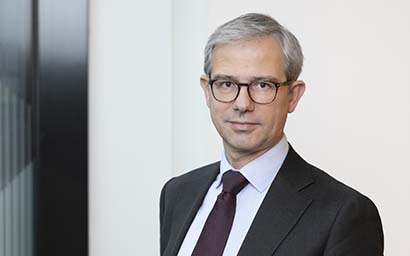The fund industry needs to grow its relationship with retail clients but today the end investor is still hidden behind a difficult and resource-consuming process. Paolo Brignardello, Chief Commercial Officer of FundsDLT, explains that by focusing on the investor and deploying next-generation infrastructure all actors stand to benefit.
How investment funds are bought and sold today is changing. Some of this is happening now and is a result of forces arising from investor behaviour, technology advancements, regulatory pressures and competition. However, a more profound shift is on the horizon. Asset managers will be able to open up new opportunities and set up new services if they can combine an investor-centric approach with a consistent use of digital technology.
Fund actors under pressure
European fund actors are confronted with many challenges. There are basically three broad types of these: market challenges, regulatory and investors needs and new competition. As a result of these ongoing pressures, the historical squeeze on costs, fees and margins continues unabated for actors in the distribution chain.
Policymakers push for greater financial inclusion and savings, investor protection, transparency and value for money, the last two also being top of mind for investors. Additionally, retail investors have seen how other industries have evolved and now expect a new omnichannel experience, with a heavy focus on information in real time and on demand.
Sustained, low and even negative interest rates in the market make fees seem greater in proportion, thus exerting more downward pressure on margins. On the other hand, a low interest rate environment attracts investors to asset classes and types of investment, such as funds, that they may not normally consider. This can be seen in the recent record highs for net assets reached by funds in Luxembourg.
In this context of margin squeezing, recent months have seen a flurry of activity in sub-advisory mandates. Such a move makes sense, sub-advisory models can leader to less expensive products overall and bring certain advantages to asset managers and distributors, such as a higher volumes and more long-term business.
However, it is competition that really keeps fund actors awake at night. Direct-to-customer fintechs and neobanks are perceived to be challenging the long-held status quo and, to a large extent, this is true. To give a recent example, installation of finance apps on mobile phones and subsequent time spent in-app grew very significantly in 2020.
Create value and grow
But it is exactly because of these new entrants that companies in the investment fund distribution chain will be able to move forward. The chain is in the process of being re-engineered with the help of fintechs in such a way that a new ecosystem is emerging which creates real value, unlocks opportunities for growth and eases access for direct relationships with retail investors.
In this way technology and the added-value of fintechs can act as drivers for the democratisation of fund products and services.
Greater participation in investment funds will foster savings and help fuel the real economy. Therefore, for asset managers and distribution actors, the aim should be to cooperate and focus on developing customer-centric business models and in such a way that is attractive for new client segments and markets.
At its most basic level, technology can simplify and streamline the existing business and operating models. This is a trend that has been ongoing for a number of years across the financial services sector. The fund industry has been a laggard in this respect but, spurred on by recent upheavals, it can quickly catch up, particularly since fintechs have been working on inefficient and undervalued areas for some time.
Put the investor at the core of the process
There are increased technological offers around today, including those that concentrate on data analytics robotic process automation, artificial intelligence and blockchain, among others. These are all important. Nevertheless, if the fund industry wants to draw in new investors and grow, the fundamentals need to be addressed.
That is to say the industry needs to make the investor account opening and transaction processes as fast and frictionless as possible. If investors are put off by what should be the simple task of buying shares in a fund, then whatever digital solutions follow this step will be severely under-used.
It is exactly in this first phase that blockchain and DLT helps. With a single ledger across the chain and direct access the fund registrar, investor onboarding, including KYC and due diligence, is greatly improved. Needless to say, the initial investment transaction includes automated trading and settlement.
It also addresses specific pain points for distributors and asset managers. There is much cost reduction through digitalisation, automation and workflow management. Also, inefficiencies and redundant activities between parties – registrar, transfer agent, distributor and asset manager – are neutralized.
Beyond this first step, there are many possibilities especially when sharing the same decentralized infrastructure for market and investor insight. With information shared in real time throughout the distribution chain, asset managers and advisors have a direct connection with end investors. They can therefore finally be in a position to have a real-time, 360 degree view of their investors. As a result, they can create more tailored products and services better suited to them and their real needs.
With a complete digital infrastructure at their disposal, fund actors can ease access to products and bring transparency and knowledge of the customer to the process, all while reducing costs.
This is what is meant by putting the end investor at the heart of the fund industry. It is the vision that FundsDLT is built around and one that makes fund distribution cheaper, easier and transparent.
© 2021 funds europe





